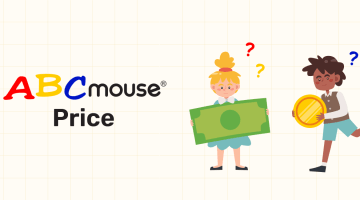20 Classroom Math Games for Kids
Updated on September 20, 2024
Have you ever experienced a situation where kids get so nervous about a math topic they keep sweating or making excuses to leave the classroom? Math can be challenging for kids, especially without the help and guidance of an understanding adult.
The school learning system has advanced from settling for conventional classroom learning to adopting the Montessori method. Now, teachers and tutors use a more hands-on approach, like game-based learning, to help kids understand math better.
Since playing games excites kids, teachers can leverage this passion to ensure every student actively participates in their math lessons. You are in the right place if you want to see how to get your students enthused about learning using classroom math games.
Kindergarten Classroom Math Games
Since teachers first expose children to elementary math concepts in kindergarten, they must help them learn about numbers and shapes by playing math games for classroom. Here are some kindergarten math games to introduce to your students.
Stacking playoff
As one of the most suitable kindergarten math games for the classroom for kids, stackable cups are a great way to keep kids engaged. You should tag cups with numbers for this game and have the kids call out the numbers while stacking. You can create a race by having teams compete against each other to determine who can complete their stacking the quickest.
Cups Number Matching Game
For this game, you need paper cups and markers. Get a sheet of paper and put in the required number of dots (say 5, 1, and 20.) Students should match cups to corresponding dots by writing the numbers 1 through 10 on the bottoms of the cups.
The sorting game
Math classroom games can be fun for kids. Have your kids move around the classroom and pick up toys. Afterward, they will work in teams to sort them according to their colors, and the first team to get up to twenty toys wins. The sorting game can sharpen students’ number sense.
Play a game of dice
For dice classroom math games for kids, you need dice and flashcards. Each kid should roll the dice, count the numbers, and point out the flashcards. By playing this game, kids will practice to identify numbers.
1:1 Math Lessons
Want to raise a genius? Start
learning Math with Brighterly
 Let's start learning Math!
Let's start learning Math!
1st Grade Classroom Math Games
With more practice in arithmetic, kids can better comprehend numerical ideas. In the first grade, students expand on principles they should have mastered by the end of kindergarten.
By the end of the first grade, they start adding and subtracting tens, doing simple division and multiplication, and manipulating fractions. The following 1st grade math fun math games to play in the classroom leverage those principles.
Addition and subtraction bingo game
Engage in classroom math activities that teach kids how to do basic math operations like addition and subtraction. Even though you can get addition online games for kindergarten and elementary students, try this hands-on game for a change.
For this game, teachers can use bingo cards containing the solutions to easy addition and subtraction problems. Instead of reading out the numbers, read math operations like 5 + 7 or 9 – 3. To win the bingo game, students must then indicate the proper answers.
The jumping math game
The Jumping math game is one of the whole class math games that provide a great way to keep pupils’ minds active. It calls for a yes or no answer to math problems. You can call out equations like 5 x 3 = 20, and students must stand up if they feel the solution to the problem is correct. If it’s wrong, kids should sit down. Even though the class may get rowdy, it will be worth it since kids will learn along the way.
Hot potato
For 1st grade math games for the classroom like these, you need a ball, music, sticky notes, and a marker for this game. Write different equations (e.g., 5 x 8 =?) on sticky notes and attach them to the ball. With all the kids seated accordingly, toss the ball around like a hot potato until the music dies. When the music stops, whoever possesses the ball must peel off the sticker and solve the math question.
2nd Grade Classroom Math Games
When it comes to teaching young children arithmetic, there is no better approach than using elementary math games. Games are helpful because when youngsters see math in action, they are more likely to grasp new concepts. Math games and activities in the first grade let young children see, touch, and feel math.
By the end of the second grade, students should be able to do multi-digit addition and subtraction, tell the time, perform measurements, skip count, multiply, and even calculate money. The following interactive 2nd grade math games for the classroom will help your child master the second-grade arithmetic concepts they need.
Dice and play
Dice math games for the classroom are among the simplest math activities you can introduce in the school, and expect mostly positive feedback or responses. So, get dice, pieces of paper, and pencils. Each student should take turns rolling the dice and summing up their totals. Any student that receives the highest score wins the round. You could add an extra die to make the game more challenging so the kids spend more time calculating.
Say the time (with eggs)?
For math games for grade 2 in the classroom, you need detachable plastic eggs and a marker. On one side of each egg, draw a clock; on the other side, write down the times in numbers or words. Detach the clock half from the time half of the egg and hide the pieces. The kids are to walk around the classroom looking for halves that fit the clocks. Have a treasure hunt for the halves hidden throughout the room so the students learn the concept of time telling.
Math facts
Here, kids can practice facts by spinning a marker. For the math games in the classroom, get flashcards and a marker. Make a circle from the cards and place the marker in the center. Students should take turns spinning the marker and performing basic math operations closest to both ends of the marker. For instance, if the marker points out 2 and 10, and the essential operation is multiplication, kids must do 2 x 10 = 20. If they get the problem correctly, give them cards and have them spin the marker again.
1:1 Math Lessons
Want to raise a genius? Start
learning Math with Brighterly
 Let's start learning Math!
Let's start learning Math!
3rd Grade Mathematical Games for the Classroom
Third grade students should solve two-step word problems using their knowledge of multiplication, division, subtraction, and addition. As teachers introduce the concepts of areas and perimeters, kids must be ready to learn these new topics using any available resources. The following three fun 3rd grade math games classroom make this learning possible.
Be careful of the numbers you call
For this game, a student should call a number no person can pronounce. If a student claims a number (for example, 3) for themselves, other students are to count and avoid mentioning the claimed number. Let’s suppose the number to avoid mentioning is 3; the others cannot say 3, 13, 23, etc., or any other numbers in the 30s. The game improves their counting skills and memory.
What’s the length?
Measurement is one of the topics that many 3rd graders don’t like. Luckily, this game tackles the concept head-on and makes it more appealing.
Organize youngsters into teams and give them the task of finding items of varying lengths, like 3, 2, and 5 centimeters. Use a ruler to measure and cross-check their answers. After playing this game for a while, your third-graders will be skilled in performing more precise measurements.
Can you get the shape?
Kids will have a lot of fun as they work their way through this third-grade geometry game. Make a piece of paper with hints on geometry for them to answer. Afterward, children are to hunt for items that resemble the shapes. On a piece of paper, write, “I am a geometrical form with no end, so who am I?” Once kids realize the shape is a circle, they can search for circular-shaped items around the classroom.
4th Grade Classroom Math Games
In the fourth grade, kids extensively use all four operations — addition, subtraction, multiplication, and division — to answer word problems involving multi-digit numbers. They learn more about fractions, including organizing and using (equivalent) fractions. Kids also learn to call upon different ideas they learned from previous math classes to solve a problem. You can let them play the next 4th grade math games for the classroom to help the process.
Bingo
Teachers should create bingo cards with the equations of square roots, multiplication, and division problems. Write out higher equations like 2², √16, etc., on the bingo cards, and have the kids solve them. Students are tasked with finding the answer on their bingo card. The first person to complete an entire row or column is the winner of the game.
Sign out game
For the fun math games for 4th grade, provide a unique set of problems for each student. Then, rather than working on their worksheets, pupils must focus on answering one problem of each of the other students.
Also, kids must attach their names and signatures to prove that they were the ones who solved the problem. Even though the class may get rowdy, everyone must focus on someone else’s math problems. This game can go a long way to encourage teamwork.
The fraction game
Nothing beats snacks and eating as far as children are concerned. So, you can consider baking a cake with students as an exciting class activity. To help kids learn, fractions should be part of the baking process.
Teach children to measure ingredients like ⅘ spoon of baking powder, 3 ounces of butter, and ¾ cup of sugar. Your fourth graders will learn about fractions, measurements, and cooking all at once.
1:1 Math Lessons
Want to raise a genius? Start
learning Math with Brighterly
 Let's start learning Math!
Let's start learning Math!
5th Grade Classroom Math Games
Fifth-graders learn how to add, subtract, multiply, and divide fractions. At that stage, your child can compute and deduce the relationships between numbers in little time. By the end of fifth grade, they should be able to apply what they learned in the classroom to real-life situations. These are three 5th grade math games that help them reach that goal.
Math jeopardy war
5th grade classroom math games need to show some sort of maturity, and the math Jeopardy War game provides just that. Set up your Jeopardy board with graphs, geometry, area and perimeter, multiplication and division, and so on. Then, give at least three questions with three distinct point values for each category.
Organize students into two groups, read out the question, and the first team to answer the questions gets the point. They may keep answering until they get the answer wrong. This game can help increase children’s speed and accuracy when answering math problems.
The voting game
Who does not enjoy the freedom of choice? No one. Asking students to vote can be a fun way to engage the class. If you are creative, a simple question like, “Is homework necessary?” can be pretty engaging.
So, for this game, you need two cups of erasers. Label one cup “Yes” and the other “No.” Students should vote for their chosen option by placing an eraser in either cup. After the poll is finished, have students make a graph of the results. This game is one of the best math games for 5th graders as it will help them cement their knowledge of charts and graphs.
The multiplication facts game
Fifth graders must be thoroughly grounded in their understanding of the multiplication table. An easy way for kids to learn the times table is by splitting the class into two groups and organizing a quiz.
Call random numbers and have them mention their multiples. Award points for accurate answers and no points for incorrect ones. This game builds a sense of competitiveness and strengthens students’ knowledge of multiple factors.
The multiplication game and others on this list aren’t limited to the classroom. Since teachers may not always have time to engage kids in games, it is often wise to employ the services of tutors. Brighterly is an online math learning platform with professional tutors who understand kids and always want to give them the best learning experience. Register now to give your child a better chance at solving math problems independently.
Conclusion
Without solid groundwork to build on, math for kids can be a real struggle for children. Given these obstacles, educators must include interesting math games in the classroom to stimulate students’ interest in the topic and promote a love of learning.













